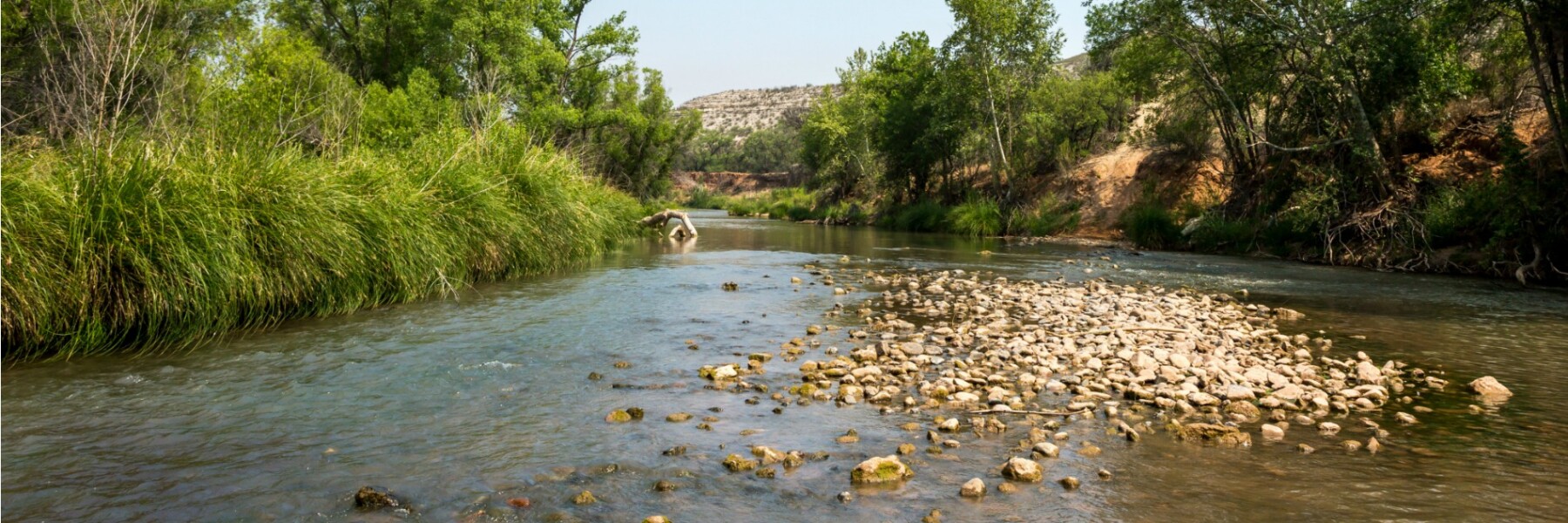In the heart of an Arizona summer, there is almost no escape from the unrelenting heat. In Phoenix, residents endure temperatures exceeding 100 degrees on 110 days, on average, every year. In the surrounding desert, where almost every living thing is exposed to sweltering sun, it is a rare blessing to find a cool oasis, where a flowing river provides respite.
The Verde River is one of those places.
This summer, I visited the river at Camp Verde, Arizona, during a record-hot day of 112 degrees. It was the same week that the mercury hit 120 degrees in Phoenix and the city’s airport was forced to ground some flights due to extreme heat.
I was there to float the Verde River with a few conservation and philanthropic partners interested in the long-term health and protection of the river. As we reached the riverbank, under the shade of a tree, we felt the temperature drop 20 degrees. Our group let out a collective sigh as we dipped our feet into the water and launched our kayaks for a three-hour float.
It is hard to imagine just how harsh and unsparing the landscape can feel – unless you are here and dropping a boat into the cool water of a natural stream.
The Verde is one of the last continually flowing rivers in the desert Southwest. A haven for wildlife, the river’s forest corridor supports one-third of the Southwest’s breeding areas for the desert nesting bald eagle and more than 200 other bird species. It is one of only two places in Arizona with an active breeding population of river otters.
It’s just as important to people.
The Verde River watershed provides the main water supply for numerous small towns in central Arizona, such as Camp Verde, and up to 40% of the surface water supply for major urban areas further downstream in the Phoenix metro area.
But the long-term health of the river, and its ability to provide for human and environmental needs, is at risk. The river is impacted by surface water withdrawals, groundwater pumping and the insidious effects of long-term drought.
Rising temperatures are compounding those problems. A recent study by scientists Brad Udall and Jon Overpeck looked at the implications of an ongoing drought and excessive heat to river flows in the Colorado River Basin. They found that as “temperatures increase in the 21st century due to continued human emissions of greenhouse gasses, additional temperature-induced flow losses may exceed 20% at mid-century and 35% by the end of the century.”
The Walton Family Foundation is determined to help restore and protect the Verde River ecosystem. A healthy, flowing river not only keeps the natural environment in balance, but it also delivers water certainty that supports economic vitality for rural and urban communities across Arizona.
Working with local partners in the region, we’re helping to restore river flows, improve agricultural operations, remove invasive species, stabilize groundwater levels and improve water security for continued economic growth.
My visit to the river coincided with the harvesting of beautiful golden field of malt barley – the keystone of a creative solution to improve river flows.
Agriculture has been an important part of the economic and cultural identity of the Verde Valley for more than 100 years. Surface water is diverted from the Verde River through more than 40 different ditches to irrigate a variety of crops, including hay, corn, vegetables and now malt barley.
In January 2017, a small group of innovators including Hauser Farms, The Nature Conservancy and Sinagua Malt planted 144 acres of malt barley. This was a significant shift from the traditional summer crops such as corn and alfalfa. This shift to malt barley provides equivalent farm revenue and diverts less irrigation water from the river during the summer, when the flow is critically low. The result is more water in the river for people and wildlife – and a profitable crop for local farmers. By October later this year, Sinagua Malt will be producing high quality locally produced malt to sell into the booming craft brewery market.
The river is an ecological gem, a central water supply for communities and a way of life for local agriculture. At the foundation, we recognize that if the Verde River is to remain a vibrant natural resource, more of these types of collaborative solutions are needed to improve the river now and protect it into the future.





